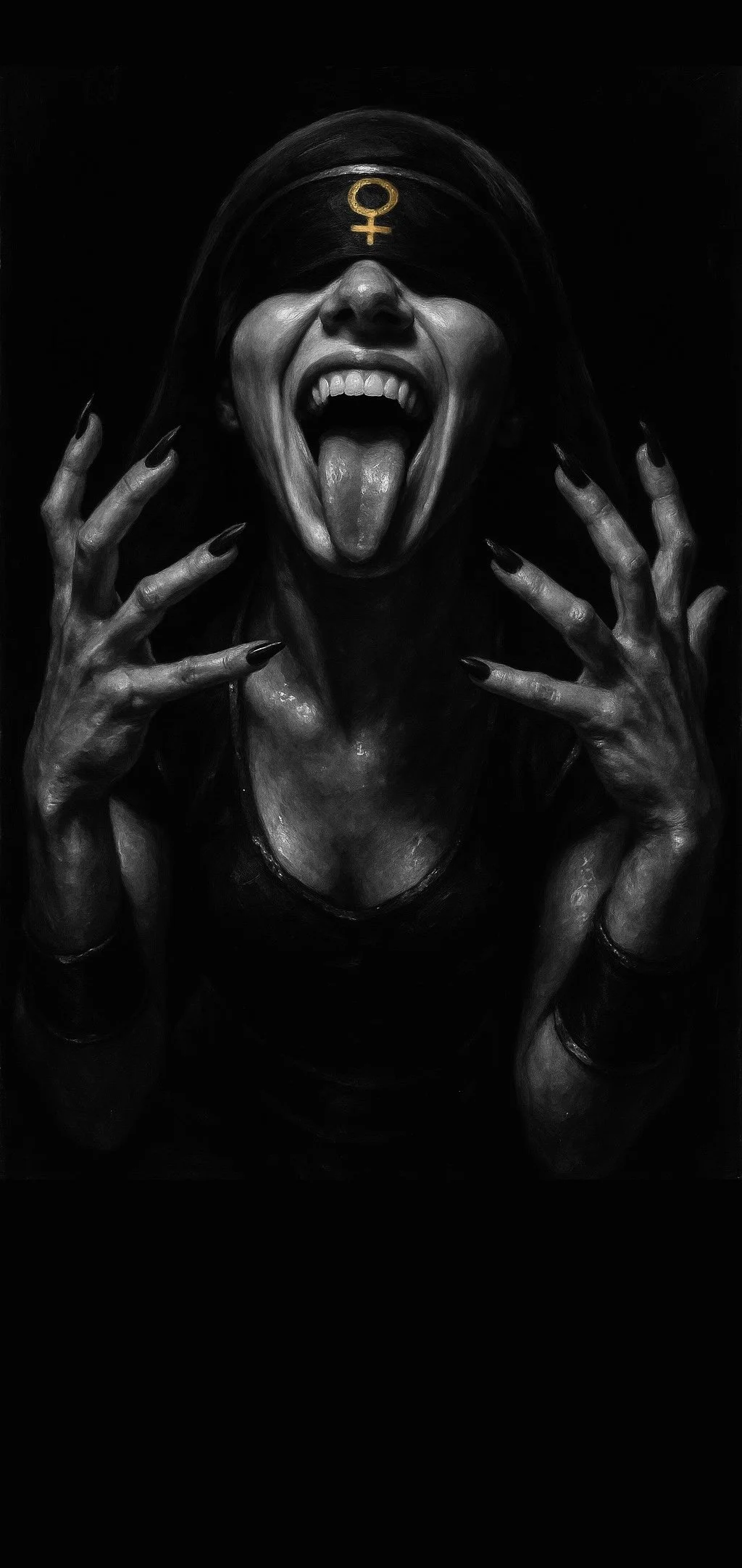
#014
VAH Ehk-suh
In the scorched highlands near the southern coast of the Black Sea—where the wind moves like a blade and the rivers once ran red with the rites of warriors—there existed a figure etched only in fragments: Vex. Though her name is absent from Greek epics and sanitized Roman records, she was a living myth to the tribes who dwelled beyond the reach of Athens and Sparta. Oral traditions of a scattered warrior people speak of a towering woman cloaked in black and gold, her face veiled from the eyes of the unworthy. She was no queen, yet stood beside one—an obscure sovereign whose name survives only in weather-worn stone and the chants of mountain-bound matriarchs. This queen’s counselor, this war-sister, was Vex: the firebrand who bled not for peace, but for dominion and divine fury.
The cult that followed her was small but unyielding. Their rites were intimate, blood-bound, and carried out beneath crescent moons on cold cliffs overlooking the sea. She was worshipped not with meek offerings but with sharpened iron and broken teeth—symbols of strength offered in reverence. Unlike the soft goddesses of later civilizations, Vex was never imagined in repose. Her divinity pulsed in movement, in precision, in the discipline of violence tempered by loyalty. Those who bore her mark were taught not to submit, but to carve space in a world that refused to yield.
Legends say she never revealed her eyes, for they would reflect not the world—but the world’s weakness. The headdress she wore, the black Nemes with its golden seal of Venus, became both relic and relic-guard. Her covered face came to symbolize judgment not from the heavens, but from within—an inner fire that did not await permission to burn. She judged silently and without compromise. The hidden became holy, and in her silence, thousands found defiant purpose.
Some scholars whisper that Vex may have been real—a hardened strategist and spiritual figure who served an unrecorded Amazonian queen during a violent political schism between allied hill tribes. Archeological digs near the Thermodon Valley unearthed weaponized adornments eerily matching oral descriptions: a gold-chased choker, blackened ceremonial cuffs, and etchings of the Venus symbol far older than any Roman engraving. Yet her name—always Vex, never a longer form—remains linguistically unmoored. It surfaces in no dialect, yet its presence lingers in fragmented lullabies and war chants from the Pontic steppes.
In the waning centuries before Hellenistic conquest, the cult of Vex vanished. Some say it was absorbed into early Anatolian fertility rites, reshaped and softened until nothing fierce remained. Others claim her followers burned their temples rather than see her image desecrated by foreign priests. Regardless, she endured—not as a goddess chained to myth, but as a living blaze too volatile to catalog. To those who remember, she was never divine because she was perfect. She was divine because she refused to kneel.